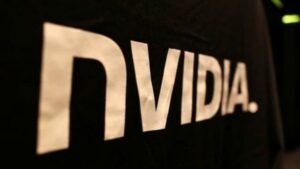NVIDIA has a stranglehold regarding AI companies and startups thanks to how it has dominated AI-capable GPUs. Now, tech companies that are eyeing a piece of that AI hardware market are planning to take on NVIDIA.

NVIDIA, with its $2.2 trillion market cap, has long been a leader in the artificial intelligence (AI) space. This is primarily due to its production of AI chips that power a wide range of applications, from startups to tech giants like Microsoft, OpenAI, and Google parent Alphabet.
The biggest contributing factor to NVIDIA’s stronghold in this arena is its CUDA platform, which, because of its legacy performance advantages, has become the de facto application for developing AI models. So widely adopted is NVIDIA’s CUDA platform that over 4 million global developers believe it is integral to building AI and other applications.
However, a coalition of tech heavyweights, including Qualcomm, Google, and Intel, is now seeking to challenge NVIDIA’s dominance by targeting its proprietary software, which binds developers to its chips.
Spearheaded by the UXL Foundation, this consortium aims to create open-source software and tools capable of supporting various AI accelerator chips, enabling code to run on any machine, irrespective of the underlying hardware.
Qualcomm’s head of AI and machine learning, Vinesh Sukumar, highlighted the initiative’s goal of guiding developers away from NVIDIA’s platform. At the same time, Google’s director of high-performance computing, Bill Magro, emphasized the importance of fostering an open ecosystem and promoting hardware choice.
The UXL Foundation’s technical steering committee plans to finalize technical specifications by the end of the year, with an emphasis on inclusivity and collaboration among multiple companies.
Although UXL has already garnered technical contributions and plans to court additional stakeholders, such as cloud-computing companies and chipmakers, it aims to address pressing computing challenges, particularly in AI and high-performance computing applications.
However, efforts to challenge NVIDIA’s AI dominance extend beyond the UXL Foundation. Venture financiers and corporate investors have poured billions into 93 separate initiatives to disrupt NVIDIA’s software dominance. While success in this endeavor remains challenging, startups increasingly invest in technologies to rival NVIDIA’s longstanding position in the AI landscape.
One has to realize that it is not only in the features of NVIDIA’s CUDA software but also in the entrenched usage and code built around it over the past 15 years. As the battle for AI supremacy unfolds, NVIDIA faces mounting pressure from a growing ecosystem of competitors and innovators determined to reshape the landscape of AI computing.









